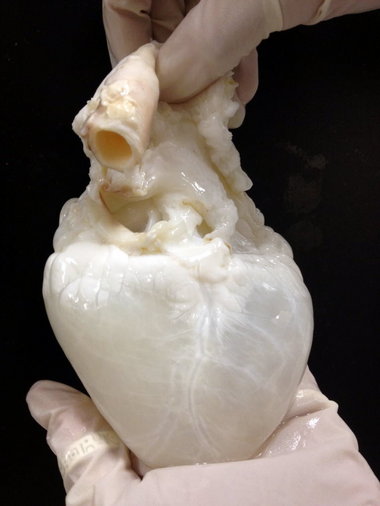"Doris Taylor doesn't take it as an insult when people call her Dr Frankenstein. “It was actually one of the bigger compliments I've gotten,” she says — an affirmation that her research is pushing the boundaries of the possible. Given the nature of her work as director of regenerative medicine research at the Texas Heart Institute in Houston, Taylor has to admit that the comparison is apt. She regularly harvests organs such as hearts and lungs from the newly dead, re-engineers them starting from the cells and attempts to bring them back to life in the hope that they might beat or breathe again in the living. Taylor is in the vanguard of researchers looking to engineer entire new organs, to enable transplants without the risk of rejection by the recipient's immune system. The strategy is simple enough in principle. First remove all the cells from a dead organ — it does not even have to be from a human — then take the protein scaffold left behind and repopulate it with stem cells immunologically matched to the patient in need. Voilà! The crippling shortage of transplantable organs around the world is solved."
Above is a "ghost heart," a pig heart that has been stripped down to its protein scaffolding. The reason that it's white is because that protein scaffolding is called connective tissue, and connective tissue is white. There is more connective tissue in the human body than any other type, period: bone, fat, blood, tendons, ligaments, the inner and outer lining of all our organs/nerves/muscles…ALL of that is connective tissue. Theoretically if you de-cellularized the entire body we would still hold our shape, just like this pig heart has done.
This is why, as a massage therapist, I emphasize care of connective tissue so much when I talk to my clients, and the number one thing you need to do to take care of your connective tissue is: drink water. CT is made up of ground substance (basically water + protein molecules) and a matrix of protein fiber strands.
Think of it like a pot of soup. When the body is dehydrated, the soup thickens and gets too sticky and we get fascial adhesions between our muscles; the same happens if the body gets too cold or if the body has been inactive for too long (cold, unstirred soup tends to clump and so does unmoved CT). That's why your body gets stiff when it's cold outside or if you've been sitting or lying in one position for a while. That's also why it’s so important to warm up before you stretch and to stretch before you work out: soup that has been warmed up and stirred is much easier to move than soup that has been cold and still.
Take care of your soup!


